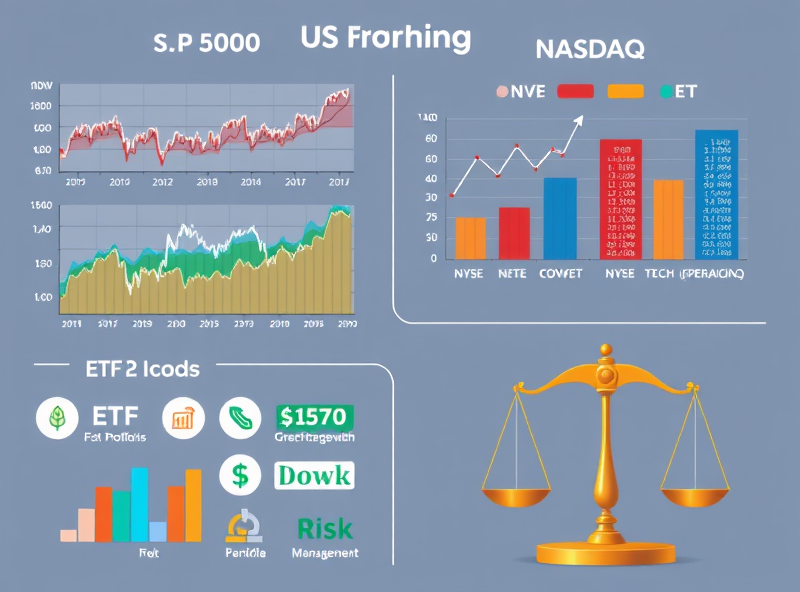Macroeconomic Trends and Market Overview

Understanding macroeconomic trends is essential for making informed investment decisions in 2025. Key indicators such as GDP growth, inflation rates, and unemployment levels provide a clear picture of the economic environment. For instance, a strong GDP growth rate often signals a healthy economy, which can lead to bullish stock markets. On the other hand, rising inflation or high unemployment may indicate economic challenges, prompting investors to adopt more defensive strategies. Additionally, central bank policies, such as interest rate adjustments, play a significant role in shaping market dynamics. Keeping an eye on these factors can help investors identify opportunities and mitigate risks in a volatile market. By staying informed about these trends, you can better align your portfolio with the broader economic landscape, ensuring long-term growth and stability.
Key Investment Focus Areas for Growth

As we approach 2025, identifying key investment areas that align with growth trends is essential for maximizing returns in the U.S. stock market. One major focus area is the technology sector, particularly companies specializing in artificial intelligence (AI), cloud computing, and cybersecurity. These industries are poised for exponential growth as businesses continue to digitize and rely on advanced technologies. Additionally, the renewable energy sector, including solar, wind, and electric vehicle (EV) infrastructure, presents significant opportunities as the global push for sustainability accelerates. Healthcare innovation, such as biotech and telemedicine, is another promising area, driven by aging populations and advancements in medical technology. Diversifying your portfolio to include these sectors can help you capitalize on long-term growth while mitigating risks. Remember, staying informed about market trends and maintaining a balanced approach are key to successful investing.
Portfolio Diversification and Risk Management

In the ever-evolving landscape of the U.S. stock market, portfolio diversification and risk management are two essential strategies for investors aiming to secure long-term financial success. Diversification involves spreading your investments across various asset classes, industries, and geographical regions to reduce the impact of market volatility. By not putting all your eggs in one basket, you can protect your portfolio from significant losses if one sector underperforms.
Risk management, on the other hand, focuses on understanding and mitigating potential downsides. This includes setting clear investment goals, assessing your risk tolerance, and regularly rebalancing your portfolio to maintain your desired asset allocation. Additionally, incorporating a mix of stocks, bonds, ETFs, and alternative investments can help you achieve a balanced portfolio that aligns with your financial objectives.
In 2025, staying informed about macroeconomic trends, technological advancements, and geopolitical developments will be crucial for making sound investment decisions. Remember, a well-diversified portfolio paired with proactive risk management is the cornerstone of sustainable investing. By adopting these strategies, you can navigate market uncertainties with confidence and work towards achieving your financial goals.
Anticipated Challenges and Mitigation Strategies

As we look ahead to 2025, investing in the U.S. stock market will require a clear understanding of potential challenges and proactive strategies to navigate them. One of the primary challenges investors may face is heightened market volatility driven by macroeconomic uncertainties, such as fluctuating interest rates, inflation concerns, and geopolitical tensions. To mitigate this, diversification will remain a key strategy. Spreading investments across different sectors, asset classes, and even international markets can help reduce risk and stabilize returns.
Another anticipated challenge is the rapid pace of technological disruption. Emerging technologies like artificial intelligence and blockchain are reshaping industries, creating winners and losers. Staying informed about these trends and investing in companies that are leading innovation can provide an edge. Additionally, investors should be cautious of speculative bubbles in tech-related stocks and ensure they are not overexposed to high-risk assets.
Regulatory changes may also pose challenges, especially as governments worldwide tighten rules around data privacy, environmental standards, and corporate governance. Investors should monitor regulatory developments and consider investing in companies that prioritize compliance and sustainability.
Lastly, behavioral biases, such as fear and greed, can lead to poor decision-making during periods of market uncertainty. Developing a disciplined investment plan, setting clear financial goals, and consulting with financial advisors can help investors stay on track and avoid emotional reactions to market fluctuations.
By anticipating these challenges and implementing thoughtful mitigation strategies, investors can position themselves for success in the evolving U.S. stock market landscape.



